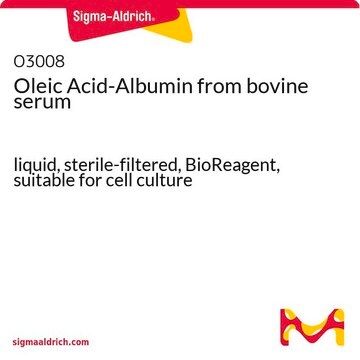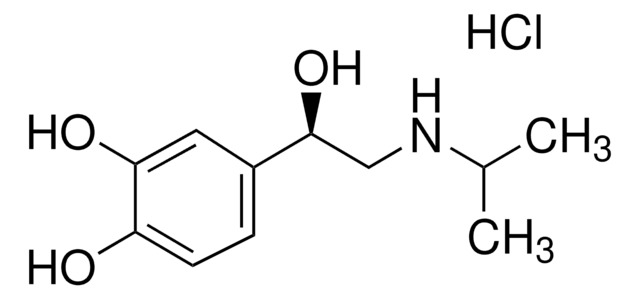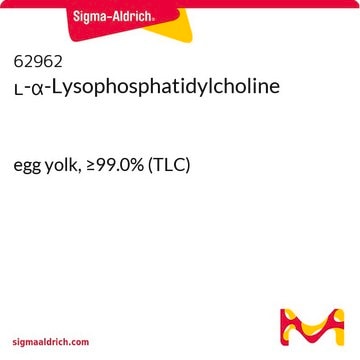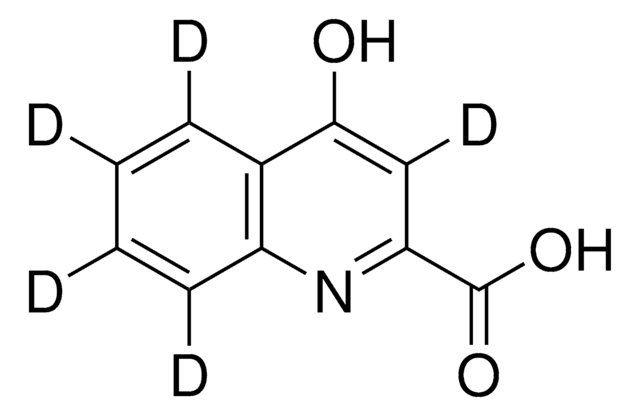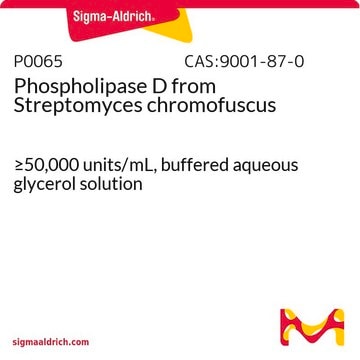L1381
L-α-Lysophosphatidylcholine from bovine brain
≥99%, Type V
Synonyme(s) :
1-Acyl-sn-glycero-3-phosphocholine, L-α-Lysolecithin
About This Item
Produits recommandés
Description
zwitterionic
Type
Type V
Essai
≥99%
Type de lipide
phospholipids
Température de stockage
−20°C
Description générale
Application
- to determine the dose-dependent high-mobility group box 1 (HMGB1) release in macrophage and monocyte cultures by production of lysophosphatidylcholine (LPC)[3]
- for lysolecithin demyelination of mice brain tissue[4]
- for demyelination of axons[5]
Actions biochimiques/physiologiques
Caractéristiques et avantages
Autres remarques
Code de la classe de stockage
11 - Combustible Solids
Classe de danger pour l'eau (WGK)
WGK 3
Point d'éclair (°F)
Not applicable
Point d'éclair (°C)
Not applicable
Équipement de protection individuelle
Eyeshields, Gloves, type N95 (US)
Faites votre choix parmi les versions les plus récentes :
Déjà en possession de ce produit ?
Retrouvez la documentation relative aux produits que vous avez récemment achetés dans la Bibliothèque de documents.
Les clients ont également consulté
Active Filters
Notre équipe de scientifiques dispose d'une expérience dans tous les secteurs de la recherche, notamment en sciences de la vie, science des matériaux, synthèse chimique, chromatographie, analyse et dans de nombreux autres domaines..
Contacter notre Service technique


